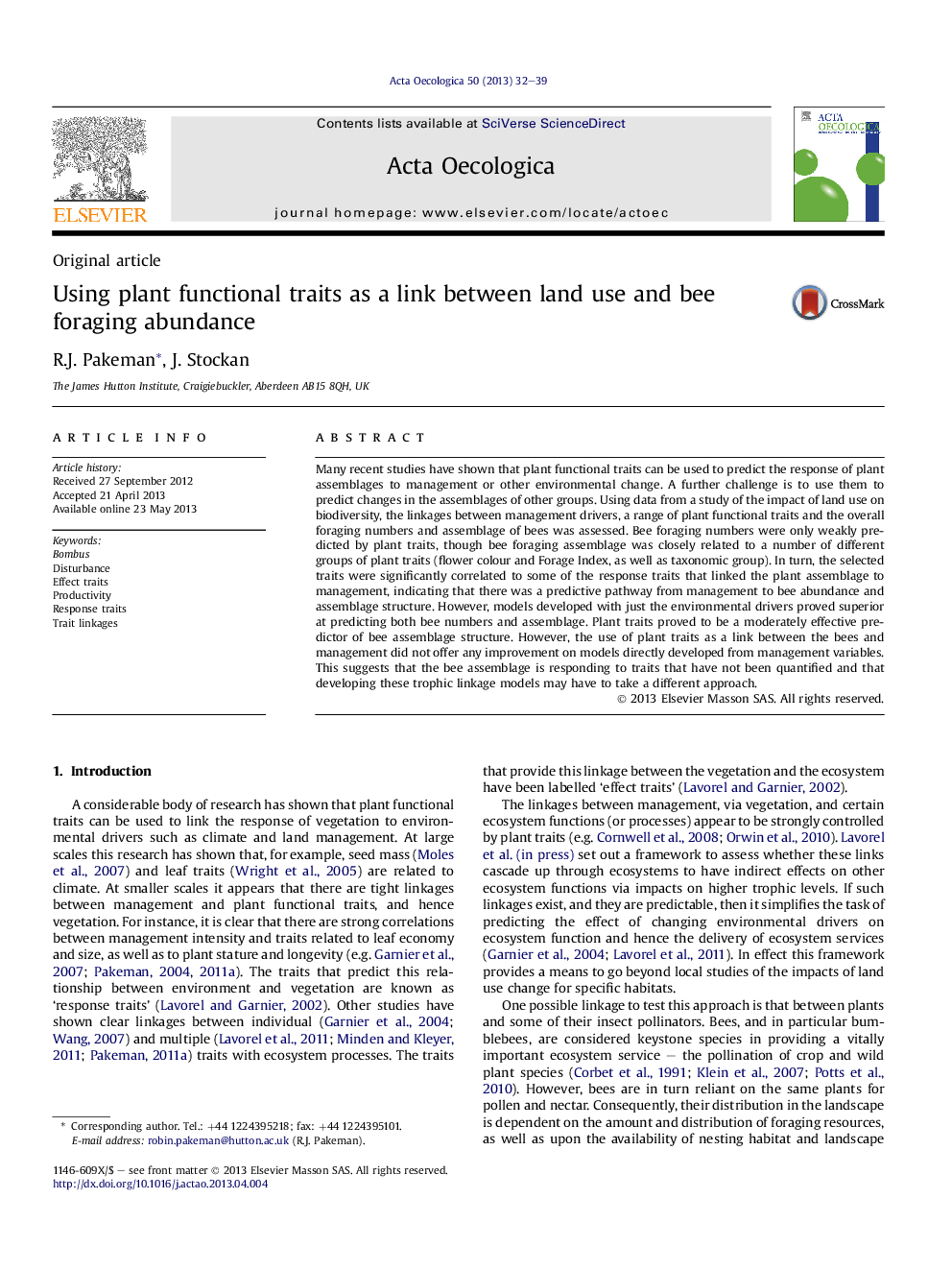| Article ID | Journal | Published Year | Pages | File Type |
|---|---|---|---|---|
| 4380829 | Acta Oecologica | 2013 | 8 Pages |
•A challenge is to use plant functional traits to predict dynamics of other groups.•Bee foraging numbers were only weakly predicted by plant traits.•Bee foraging assemblage was closely related to flower colour and Forage Index.•A predictive pathway runs from management to bee abundance and assemblage structure.•Good prediction needs new plant traits relevant to bee foraging.
Many recent studies have shown that plant functional traits can be used to predict the response of plant assemblages to management or other environmental change. A further challenge is to use them to predict changes in the assemblages of other groups. Using data from a study of the impact of land use on biodiversity, the linkages between management drivers, a range of plant functional traits and the overall foraging numbers and assemblage of bees was assessed. Bee foraging numbers were only weakly predicted by plant traits, though bee foraging assemblage was closely related to a number of different groups of plant traits (flower colour and Forage Index, as well as taxonomic group). In turn, the selected traits were significantly correlated to some of the response traits that linked the plant assemblage to management, indicating that there was a predictive pathway from management to bee abundance and assemblage structure. However, models developed with just the environmental drivers proved superior at predicting both bee numbers and assemblage. Plant traits proved to be a moderately effective predictor of bee assemblage structure. However, the use of plant traits as a link between the bees and management did not offer any improvement on models directly developed from management variables. This suggests that the bee assemblage is responding to traits that have not been quantified and that developing these trophic linkage models may have to take a different approach.
